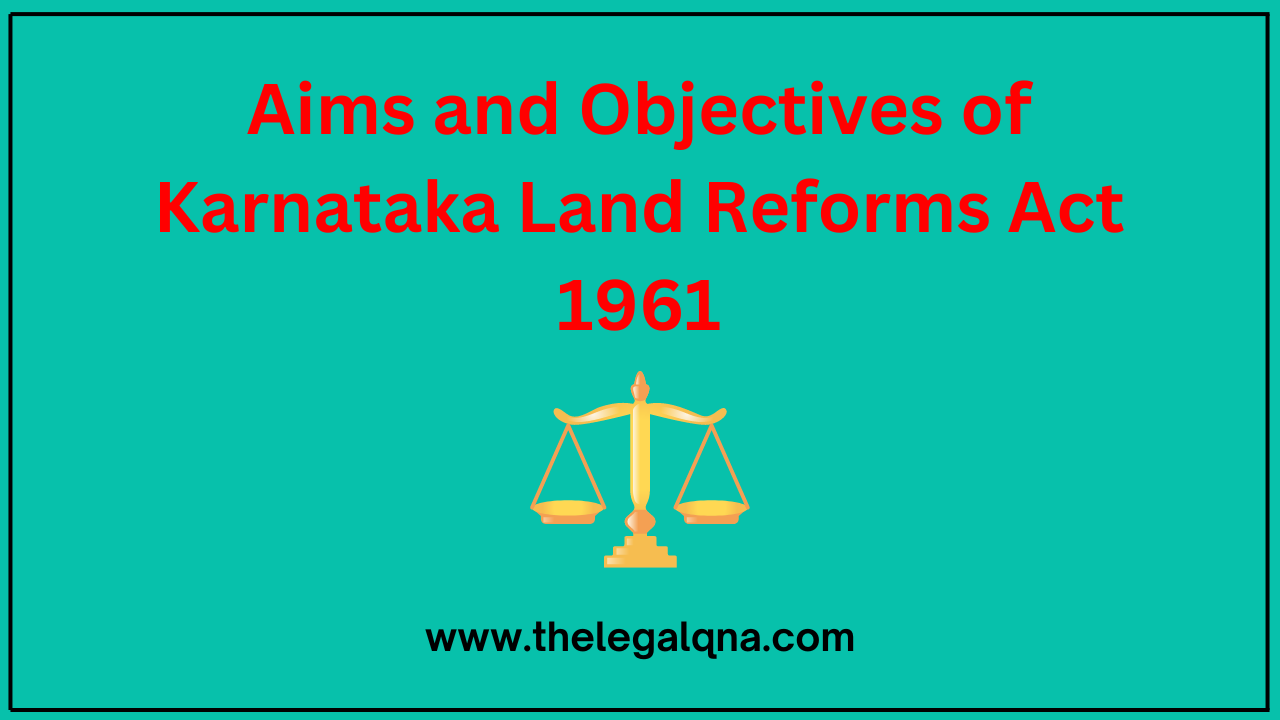The Karnataka Land Reforms Act, 1961, was enacted to address issues related to land ownership, tenancy, and the equitable distribution of land.
The Act was a part of broader land reform initiatives in India aimed at reducing inequality and improving the socio-economic status of marginalized groups, especially in rural areas.
Aims and Objectives of Karnataka Land Reforms Act 1961
#1 Abolition of Intermediaries
To eliminate the intermediaries (zamindars, jagirdars, etc.) exploiting tenant farmers by collecting rent without cultivating the land.
The Act aimed to transfer ownership directly to the tillers of the land.
#2 Protection of Tenant Farmers
To provide security of tenure to tenant farmers by conferring ownership rights upon them.
The Act aimed to prevent the eviction of tenants by landowners, ensuring that the actual cultivators had a stake in the land they worked on.
#3 Ceiling on Land Holdings
To impose a ceiling on the amount of agricultural land that an individual or family could own.
The surplus land above this ceiling was to be acquired by the state and redistributed to landless and small farmers.
#4 Redistribution of Land
To ensure the equitable distribution of land, particularly among landless laborers, small farmers, and marginalized communities.
The Act aimed to reduce the concentration of land in the hands of a few and promote social justice.
#5 Promotion of Agricultural Productivity
To enhance agricultural productivity by ensuring that land was in the hands of those who would actively cultivate it.
By giving ownership to the tillers, the Act aimed to incentivize better land management and farming practices.
#6 Regulation of Land Transfers
To regulate the sale and transfer of agricultural land to ensure it remained with those engaged in agriculture.
Initially, the Act restricted the sale of agricultural land to non-agriculturists to prevent speculation and urban encroachment.
#7 Consolidation of Landholdings
To encourage the consolidation of fragmented landholdings into larger, more viable units.
The Act aimed to make agricultural land management more efficient and reduce the issues arising from small, scattered plots.
#8 Social Justice
To address historical injustices by providing land to marginalized communities, including Dalits and backward classes.
The Act aimed to uplift these communities by providing them with land ownership and a means of livelihood.
#9 Preventing Economic Exploitation
To prevent the economic exploitation of small farmers and landless laborers by large landowners.
The Act sought to reduce rural poverty and inequality by abolishing exploitative tenancy practices and redistributing land.
#10 Legal Framework for Land Reforms
To establish a legal framework for the implementation of land reforms in Karnataka.
The Act provided the necessary legal provisions for the state government to acquire surplus land, resolve disputes, and enforce the new land ownership rights.
Verdict
These objectives reflect the Act’s role in restructuring the agrarian economy of Karnataka, ensuring more equitable land ownership, and improving the socio-economic conditions of the rural population.
Over time, various amendments have adapted these objectives to changing socio-economic realities, but the core goals of equity, social justice, and agricultural development remain central.
